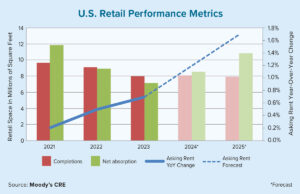John Muzyka describes the Dallas and Fort Worth area as the epicenter of America’s Bible Belt. “I guess you could say that we are the ‘belt buckle,’” Muzyka said of the religious stronghold, where his commercial real estate business specializes in helping clients buy and sell churches and church properties.
Muzyka works out of the Dallas office of the family business, Church Realty, which was founded by his father, Danny Muzyka after he quit his job as director of Parks and Recreation for Plano, Texas, in 1986. A year later the elder Muzyka began helping churches buy and sell property, and he is still working at it today.
“My father felt the call of the Lord to serve the church through real estate,” John Muzyka said. “We’ve been doing it ever since.”
Business has been steady, with between 15 and 20 transactions a year out of the Dallas-Fort Worth office. Like other areas of real estate right now, the church market is suffering from too few properties on the market and premium prices for those that are up for sale. “There are a lot of churches looking for buildings in both Dallas and Houston. If I had more listings, I’d put more churches in properties. Right now, there are more buyers than sellers.”
Not all parts of the country are seeing a boom in church demand. According to Lifeway Research, an evangelical research organization, about 4,500 protestant churches closed and 3,000 were started in 2019, the most recent year surveyed.
These figures were before the pandemic, which was expected to cause even more churches to close and fewer to open due to restrictions. “When COVID-19 hit, we thought there might be an acceleration of closures,” said Scott McConnell, the executive director of Lifeway Research. “In the immediate aftermath, we did not see that. But we are seeing that attendance is down in many churches.”
Research seems to indicate that more churches may be on the commercial real estate market in the future. According to the Pew Research Center, which has been studying the issue for decades, the number of people who are religiously unaffiliated, sometimes called religious “nones,” had grown from single digits in the 1970s to an estimated 30% of the U.S. population by 2020. By 2070, Pew estimates that between 34% and 53% of the U.S. population will describe themselves as religiously unaffiliated.
Another problem facing churches is that, according to Lifeway Research, more than 67% of the nation’s churches have 100 or fewer members. Such churches can’t afford to lose too many of their members and still be financially viable.
Churches in a neighborhood often have a natural lifespan and sometimes they lose their relevance as communities evolve, McConnell said. Still, even if membership drops, churches can stay open a long time, even years, before deciding to move, merge or sell. Often it takes a physical problem with the building, such as the need to replace a roof or an HVAC system to trigger the closing of the property.
“Such a cost would be too much for the handful of people still attending a small church,” McConnell said. “So, some churches are willing to look at other options, such as mergers or other ways to keep going. But many just try to hang on for as long as they can.”
While there has been publicity about the trend of repurposing churches for restaurants, theaters, homes and other uses, Lifeway’s McConnell said such renovations remain relatively rare. Reasons for this include that some older churches require expensive repairs and renovations. Many may not have required safety equipment, such as a sprinkler system, for commercial use.
When the time does come to sell a church, the process can be complex, depending on the religious denomination. Often, a church’s incorporation documents will contain restrictions on uses for the church property. In some cases, the church reverts back to the denomination, either at the local or national level. Other congregations may be autonomous, but they still must divest of the property in ways that are appropriate for a nonprofit.
“Typically, churches are looking for other ministries to benefit from the building,” McConnell said. “If there is another church willing to start in their location, a church might look favorably upon them and give them a deal.”
For now, John Muzyka’s business appears on solid ground. He sold a 40,000-square-foot building last year because the small congregation couldn’t keep up with the maintenance. Such decisions don’t happen quickly. It can take a congregation two or three years to decide that they need a new facility and to begin raising the downpayment. It can also take years for another church to decide they just can’t go on any longer and they need to sell.
One of his current clients is seeking a site for a church and has a budget of $1.5 million. Muzyka found a building in the group’s target area that would work well as a church conversion. But the owners want $4 million, which would equate to about $250 per square foot. According to Muzyka, the average price for church properties in good condition run anywhere from $100 to $120 per square foot. If the building has issues, it might sell for as low as $70 per square foot. Some even for less.
Muzyka said the business has definitely changed since his father started it 37 years ago. Fewer people are attending church, and the market is evolving. But their company is still on a mission.
“These church buildings are still very needed for the ministry,” he said. “There are churches that are leasing storefronts, industrial spaces and hotels and they need spaces. So, there is still a lot of work to do.” ●







